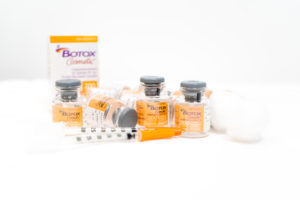If you suffer from the condition known as temporomandibular joint dysfunction (or TMJ dysfunction for short), there are probably many times you’ve wished you could make the pain and stiffness of this debilitating condition go away as quickly as possible. You may have even heard of some so-called quick fixes that might do the trick. But are these methods effective – and are they safe?
Temporomandibular joint dysfunction is a condition that affects upwards of 10 million Americans. It occurs when the temporomandibular joint of the jaw becomes out of alignment with the rest of the jaw, causing pain and side effects such as stiffness; clicking and popping of the jaw; the inability to open and close the mouth; bruxism; jaw pain; head, neck and back pain; tinnitus; and more.
Though this debilitating condition affects many people, there is no cure, leaving patients to endure sometimes lengthy treatments and seek out quick fixes to reduce the pain.
One quick fix that has been gaining popularity in recent years is Botox. Injected into the masseter muscles and temporomandibular joint, Botox is said to help relieve temporomandibular joint dysfunction pain – but at a cost.
For starters, using Botox to treat TMJ dysfunction is considered an off-label use, and it is not approved by the FDA or American Dental Association for treatment. This means you use it at your own risk, and you may or may not notice any change in your TMJ dysfunction symptoms. This also means that any long-term effects of this type of injection have not been studied, and thus there is no way to know if this type of treatment will worsen your TMJ dysfunction symptoms over time.
At best, using Botox to treat TMJ dysfunction will buy you a few months of relief, but it will need to be redone, and at a big hit to your wallet, as it is not FDA approved and will not be covered by your insurance. It also does nothing to treat the underlying problem, so your symptoms will likely never improve and you will always be beholden to your injections every three to six months.
That’s why Dr. Garcia recommends a comprehensive physiological (neuromuscular) dental treatment plan for treating temporomandibular joint dysfunction. Physiological dentistry treats not just the symptoms, but also the whole problem, and in time realigns the jaw so the pain goes away naturally, with no need to continue repeating painful and costly injections for the rest of your life.
If you believe you could be suffering from TMJ dysfunction, please give Dr. Garcia’s office a call at (305) 595-4616 and schedule a consultation. Dr. Garcia will walk you through your treatment options and help find a solution that doesn’t just eliminate the pain of TMJ dysfunction, but eliminates the problem, too.





